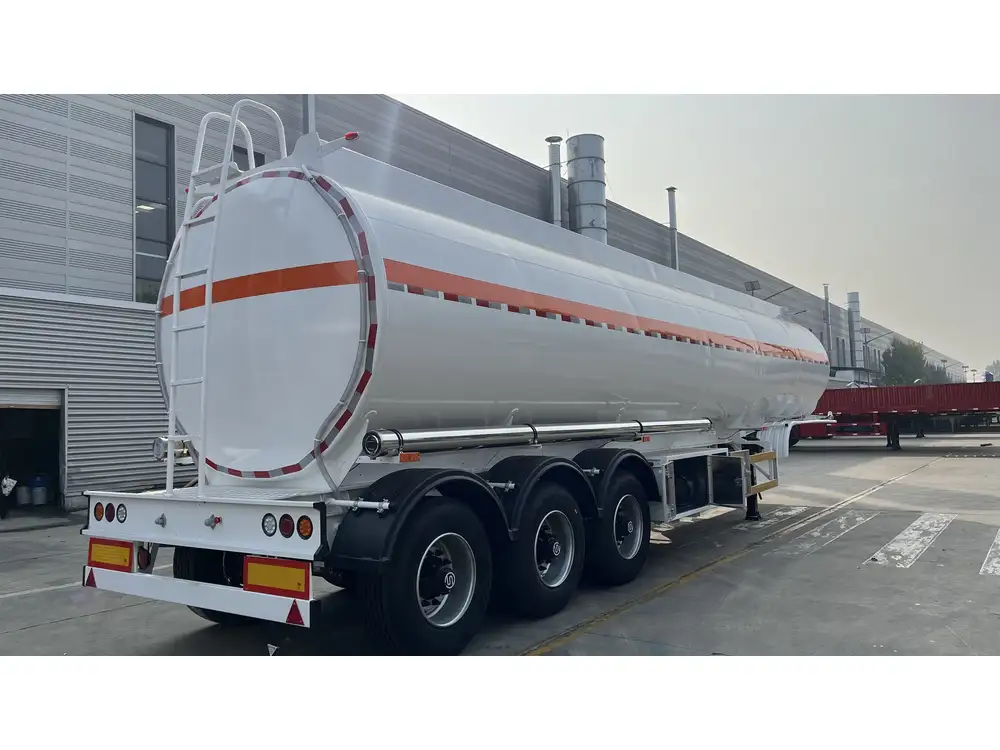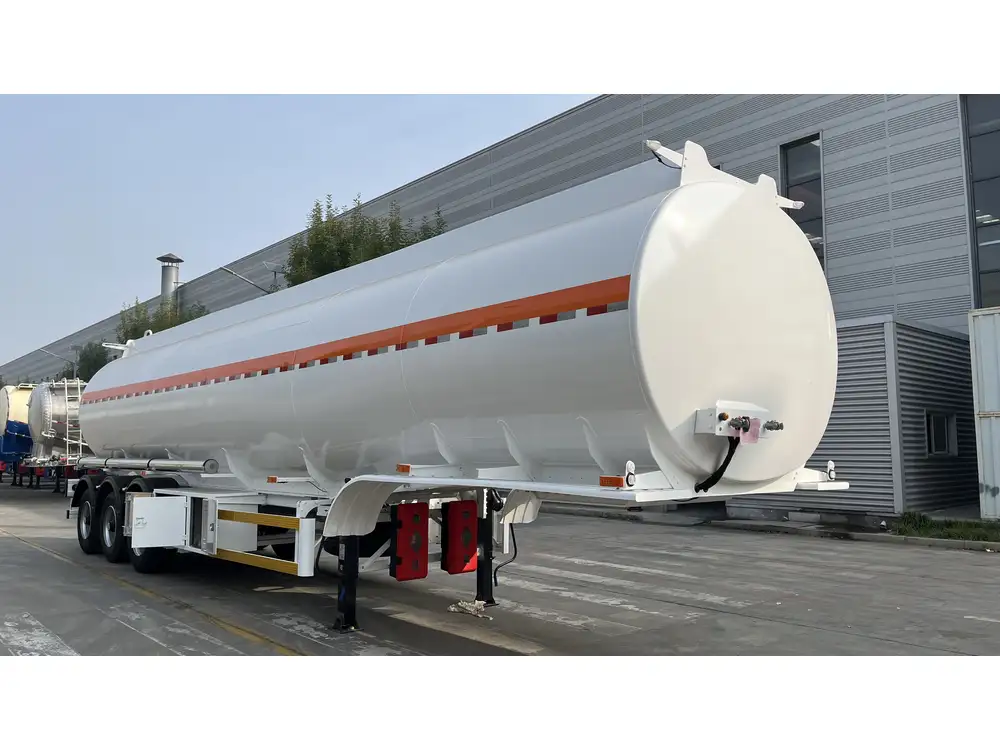When investigating the question of how many yards are in a 7×12 dump trailer, various factors come into play, particularly the design and intended use of the trailer. In this detailed analysis, we will dissect the dimensions, capacities, and various considerations necessary for maximizing the utility of a 7×12 dump trailer. This article serves as a comprehensive guide for potential owners, operators, and equipment renters who want to understand trailer specifications deeply.
Overview of Dump Trailer Capacities
Dump trailers are essential tools in construction, landscaping, and similar industries. They enable easy transport and unloading of materials, making them invaluable for projects of varying scales. The numerical designation of a 7×12 dump trailer refers to its dimensions: seven feet wide and twelve feet long.
Key Capacity Metrics
Volume Calculation:
- The general formula for calculating volume in a rectangular prism (like a dump trailer) is: [ \text{Volume} = \text{Length} \times \text{Width} \times \text{Height} ]
- For our 7×12 dump trailer, while height varies based on the trailer’s design, we can calculate an approximate volume based on average heights, typically around 2 to 3 feet for sidewalls.
Yard Conversion:
- One cubic yard is equivalent to 27 cubic feet. Thus, to convert our volume from cubic feet to cubic yards, we divide the cubic feet by 27.

Example Calculation
Assuming a height of 2 feet for a 7×12 trailer: [ \text{Volume} = 12 \text{ ft} \times 7 \text{ ft} \times 2 \text{ ft} = 168 \text{ cubic feet} ] [ \text{Cubic Yards} = \frac{168}{27} \approx 6.22 \text{ cubic yards} ]
Conversely, with a height of 3 feet: [ \text{Volume} = 12 \text{ ft} \times 7 \text{ ft} \times 3 \text{ ft} = 252 \text{ cubic feet} ] [ \text{Cubic Yards} = \frac{252}{27} \approx 9.33 \text{ cubic yards} ]
Thus, the capacity of a 7×12 dump trailer generally ranges between 6 to 9 cubic yards, depending on the height of the sides.
Types of Materials and Their Impacts on Load Capacity
Common Materials Transported by Dump Trailers
Knowing the capacity is not merely about numerical values — it directly affects the types of materials that can be hauled safely and efficiently.
| Material Type | Weight per Cubic Yard | Approx. Total Weight |
|---|---|---|
| Earth/Soil | 2,000 lbs | 12,000 to 18,000 lbs (6-9 yards) |
| Gravel | 1,500 lbs | 9,000 to 13,500 lbs |
| Sand | 2,500 lbs | 15,000 to 22,500 lbs |
| Mulch | 500 lbs | 3,000 to 4,500 lbs |
| Concrete (where applicable) | 4,000 lbs | 24,000 to 36,000 lbs |

Considerations for Maximum Load
- Weight Restrictions: It is crucial to not only consider the volume but also the weight limits of your dump trailer. Most 7×12 dump trailers have a Gross Vehicle Weight Rating (GVWR) that restricts how much can be legally towed.
- Material Behavior: The compaction of materials, such as how tightly soil is packed, can influence effective capacity. For example, loosely packed materials may fill more volume but weigh less, while denser materials, such as concrete, may occupy less space and weigh significantly more.
Design Variations of 7×12 Dump Trailers
Understanding how different designs can affect capacity and usability is vital. Dump trailers can be categorized based on their construction and intended use:
1. Standard Dual Axle Trailers
- Ideal for general landscaping and construction.
- Typically designed to carry heavier loads due to increased weight distribution.

2. Gooseneck Trailers
- Provide better maneuverability and stability, especially for heavier loads.
- Typically used by contractors needing to transport heavy equipment alongside materials.
3. Tilt Trailers
- Equipped with hydraulic tilt functions for easier unloading.
- Useful for transporting loose materials or items that require a gentle unloading process.
4. Heavy-Duty Trailers
- Built with reinforced frames for demanding industrial applications.
- Often feature higher side walls for maximizing capacity.

Practical Applications of a 7×12 Dump Trailer
Landscaping Projects
Utilizing a 7×12 dump trailer for landscaping can significantly streamline the process, whether you’re delivering mulch, soil, or decorative rocks. With a capacity that can handle substantial loads, contractors can maximize efficiency while minimizing trips.
- Buying Tip: Consider mulching or soil density when estimating how many trips you need; compost might weigh less than regular soil, increasing the potential number of cubic yards transported.
Construction Sites
In the construction industry, the agility and load-carrying capacity of a dump trailer are invaluable. Such trailers can transport aggregates, debris, or even small machinery. This versatility is essential for both small contractor operations and larger industrial projects.
- Operational Efficiency: Utilize the dump feature for easily unloading dirt or excavation debris, reducing labor and time spent on site.

DIY Projects
Homeowners undertaking DIY renovations or landscaping can also benefit from a 7×12 dump trailer. Whether you’re disposing of debris, transporting sand or gravel for a patio, or moving renovation materials, this size strikes the perfect balance between capacity and maneuverability.
Understanding Loading and Unloading Techniques
Efficient loading and unloading are critical for maximizing the utility and lifespan of a 7×12 dump trailer.
Loading Techniques
- Uniform Distribution: Spread the material evenly across the trailer to avoid tipping during transport.
- Weight Monitoring: Regularly check the trailer’s GVWR to avoid overloads that could strain the vehicle and the trailer itself.

Unloading Techniques
- Controlled Dumping: Use gradual, controlled dumping for better material placement and to minimize spills.
- Tilt Adjustment: For tilt trailers, adjust the angle to facilitate a smoother release of the material.
Safety Measures and Legal Compliance
When operating a dump trailer, safety should always be paramount. Here are essential practices and considerations:
Check Local Regulations
- Weight Restrictions: Ensure that you are aware of regulations governing empty versus loaded weights on specific roads and highways.
- Towing Capacity: Verify that your vehicle meets the towing capacity requirements for the dump trailer.

Secure Loads
- Weight Distribution: Balance loads to avoid swaying and potential accidents during transit.
- Tie-Downs: Utilize straps and tarps to secure loose materials to prevent them from falling during transit.
Conclusion
In summary, a 7×12 dump trailer typically has a capacity ranging from 6 to 9 cubic yards depending on the height of the trailer’s sides. Its versatile applications across landscaping, construction, and DIY projects make it an essential piece of equipment for both professionals and enthusiasts alike. Properly understanding the trailer’s load capabilities, design variations, and safety regulations will ensure an efficient and secure operation.
Whether you’re involved in heavy construction or just need to transport materials for a home project, maximizing the utility of your 7×12 dump trailer can foster a productive workflow, reduce costs, and elevate your project’s efficiency. Embracing these detailed insights and adhering to best practices will undoubtedly pave the way towards successful operations and fruitful endeavors.



